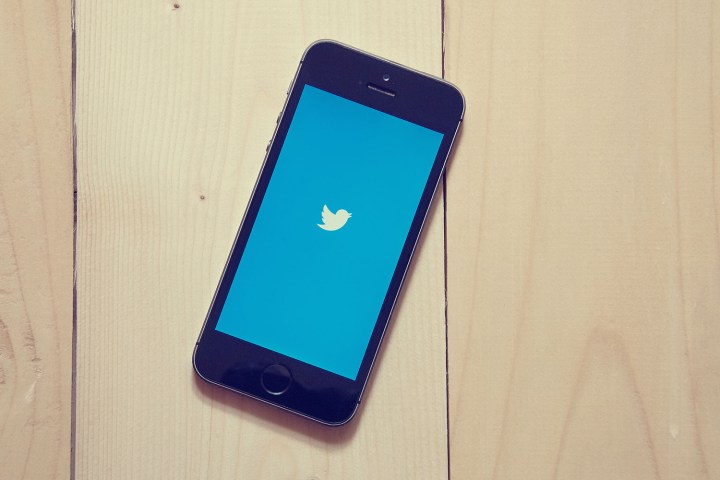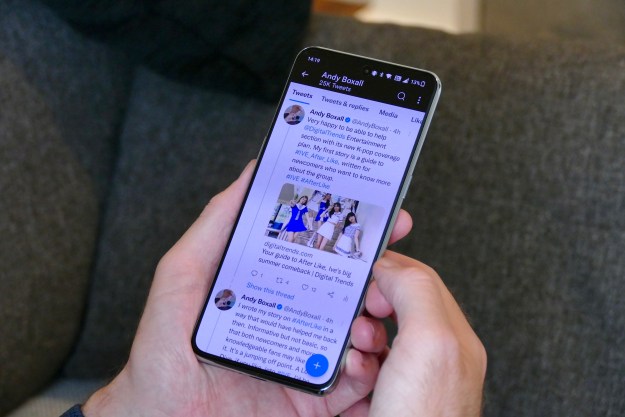
Twitter’s board of directors is spearheading the acquisition effort, Recode reports. It’s seeking at least $30 billion, although the exact number is reportedly in flux. Conversations are “picking up momentum,” the publication reported, and an announcement is expected “before year-end.”
Rumors of a buyout drove the social network’s stock price to record highs — it was up as high as 20 percent in morning trading — on Friday.
Twitter’s suitors reportedly see as much value in its data as in its brand recognition. Salesforce and Google both stand to benefit from the social media network’s fire hose of real-time information. Einstein, Salesforce’s artificially intelligent management software that automates tasks with a combination of machine learning, natural language processing, and contextual analysis, requires vast amounts of data to calibrate. So, too, do Google’s myriad artificial intelligence software — the search firm said that a single component of an image recognition algorithm requires “tens of thousands” of data samples.
Data isn’t Twitter’s only draw. It’s focused concertedly on improving tools for businesses that interact with customers on the platform. Earlier this year, it rolled out a dedicated webpage from which spokespeople can directly message users and update hours of support availability. And in October, it partnered with Oracle, Sprout, and others to build “Twitter-based customer service products” capable of “search[ing] and surfac[ing] relationships between business and customers.”
Ev Williams, former Twitter CEO and co-founder, spoke to the company’s efforts at a Recode event last year. “In 2008 or 2009, before we monetized at all, we saw 1 million people sign up to follow Starbucks,” he said. “Now it’s a major source for customer service and marketing.”
That momentum has unsurprisingly piqued the interest of Salesforce’s higher-ups. The company commands an 18.4 percent share of the customer relationship management (CRM) market — far and away the largest of any firm in the category.
Twitter’s strength in data and CRM doesn’t discount its raw reach, though. The social network generates a deluge of 500 million tweets a day and attracts, on average, from more than 500 million users each month. Notable events occasionally boost those numbers to nearly inconceivable heights: During the 2014 FIFA World Cup Final, 618,725 tweets were sent in a single minute, and one of the most retweeted messages of all time — a selfie capture by comedian Ellen DeGeneres at the 2014 Academy Awards — was shared more than 3.33 million times.
For Google, which has repeatedly tried — and failed — to challenge social media incumbents like Facebook, that sort of built-in growth is likely attractive. One of the company’s first forays into networking, the microblogging Google Buzz, was marred almost immediately by controversy: By default, it publicly disclosed a list of users’ most frequently emailed contacts. Subsequent updates allowed users to disable that feature, but negative publicity generated by a string of class-action lawsuits, public condemnation from privacy groups like the Electronic Frontier Foundation, and an investigation by the Federal Trade Commission made the project untenable. In 2011, Google announced that it was shuttering Buzz permanently to focus on “future” efforts.
One of those efforts, Google+, went on to experience some success. Google’s first fully featured social network offered, like Facebook, the ability to share photos, videos, events, and status updates with friends. It also allowed users to instantly text and video chat with groups of friends via the companion messaging app Hangouts. But its defining feature was Circles, communities organized around topics, friend groups, or family. In contrast to networks like
Despite Google+’s competitiveness, the platform never managed to gain traction — The New York Times reported that last year, roughly half of its 540 million active monthly users didn’t visit or use it regularly. In subsequent months, Google attempted to reinvigorate the network’s growth by integrating many of the social features of YouTube, its video-sharing website, but those efforts backfired: hundreds of thousands of YouTube users protested the requirement to create a Google+ account in order to comment on videos.
Google eventually reversed the change. Posting a comment on YouTube no longer requires a Google+ account.
In 2015, Google took a different, more palatable tact: a redesign of Google+ that emphasized Communities, or interest groups, and Collections, Pinterest-inspired web bookmarks of photos organized around a topic. But growth hasn’t come. According to an analysis conducted by research firm Stone Temple, more than 90 percent of Google+ accounts have never made a single public post, and only between 4 million to 6 million people engage with any of the social network’s content.
Google’s other efforts have seen even less success. Orkut, a social media network designed to “help users meet new and old friends and maintain existing relationships,” reached 100 million members at its peak.
Facebook, by comparison, has more than 1.55 billion active users.
Google’s drive toward a platform with critical mass aligns with its bread-and-butter business: advertising. And in that regard, Twitter’s a goldmine. In the past year alone, ad engagements — or every instance a user views or clicks on a sponsored post — grew 208 percent year-on-year. Twitter commands a 0.9 percent share of the digital ad market. And despite a second quarter with “less advertiser demand than expected,” Twitter posted revenue of $602 million — largely derived from advertising.
But Twitter isn’t without baggage.
Despite attracting more than 1.3 billion registered accounts and 313 million active users, Twitter has struggled to carve out a profitable niche in the social media fabric. It’s been beset by disappointing earnings and stagnating growth, much of which its shareholders blame on an “intimidating” level of complexity. The network has attempted to make sense of its never-ending tweet flood with tools like Highlights, which curates a selection of the most important tweets of the day the day from your feed, and a “while you were away” feature that recaps tweets users might otherwise miss. And in September, it introduced the ability to submit tweets longer than 140 characters in length, a longtime frustration of new users.
Twitter has also made strides in ensuring users aren’t quick to leave its pages. It recruited payments platform Stripe to launch a “buy” button within certain tweets — users can purchase products directly from on smartphones, tablets, and other mobile devices. It launched an ephemeral video platform in the form of Vine, and a live-streaming solution in Periscope.
It debuted Moments, a curated feed of newsworthy topics that lets users follow trending events, last year. And in July, it signed a deal with Pac-12 Networks to live-stream hundreds of college sports events — following a similar arrangement with the NFL. The network’s other television partners include the CBS, NBC and Bloomberg, and it’s reportedly negotiating with as many as 10 others.
But there haven’t been fixes as quick in store for Twitter’s other problems. Investors have pointed to the network’s failure to stem hate speech and abuse as a major deterrent to its growth. Twitter so far has attempted to fix that problem with tools, most visibly in the form of automatic filters that use “signals … such as account origin and behavior” to automatically hide suspicious, abusive, and duplicate tweets. Separately, Twitter rolled out a toggleable “quality filter” last year that removed tweets identified as offensive or threatening.
Activists have so far been critical of Twitter’s anti-abuse efforts — one, a former employee who spoke to BuzzFeed, called it a “honeypot for assholes.” It’s an image problem with which Twitter’s new owner will have to contend.
It’s too early to call a likely winning bidder, but Google appears to have a better shot. It announced a partnership with Twitter in May that saw real-time shares from Twitter added to a scrollable carousel in search results — the second such partnership between the two companies in the past five years. And perhaps more importantly, Google has the cash on hand to finance the acquisition — as much as $73.1 billion, by one estimate.
It would be a slightly more difficult bid for Salesforce, and would qualify as the largest acquisition in the firm’s history, as well as a bit of a stretch: The company has made $4 billion in buys in the first six months of this year, TechCrunch reports, and has cash reserves around half of Twitter’s current market capitalization.
The dust likely won’t clear until later this year, when formal bids are expected to be announced, but there’s potential for a shake-up. Recode reports that Apple, Microsoft, Facebook, Disney, News Corp, Comcast, and Verizon have expressed acquisition interest at one point or another.
Editors' Recommendations
- Why is Twitter called X now? Here’s everything you need to know
- Meta’s Twitter rival Threads to launch on Thursday
- Elon Musk setting up generative-AI project at Twitter, report claims
- Twitter is down and not letting us tweet — it says users are over a daily limit [Update]
- Twitter will soon be a bit less irritating for many people


